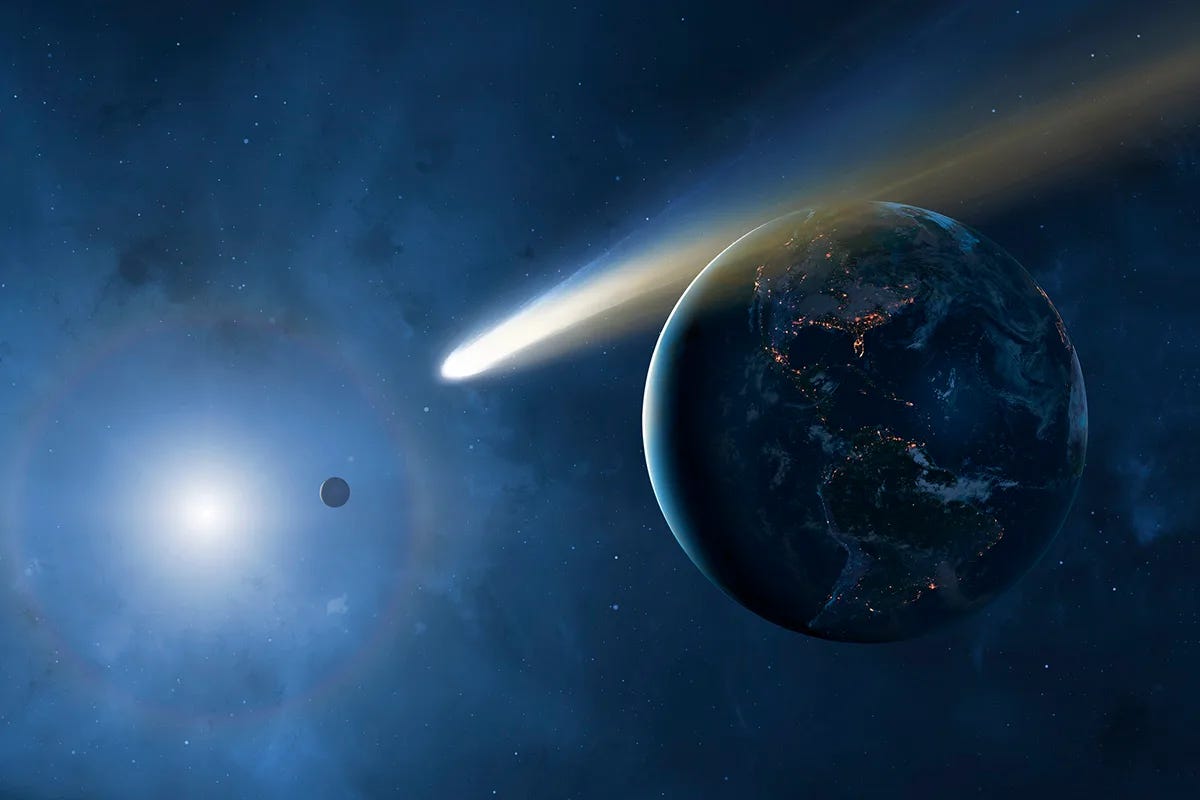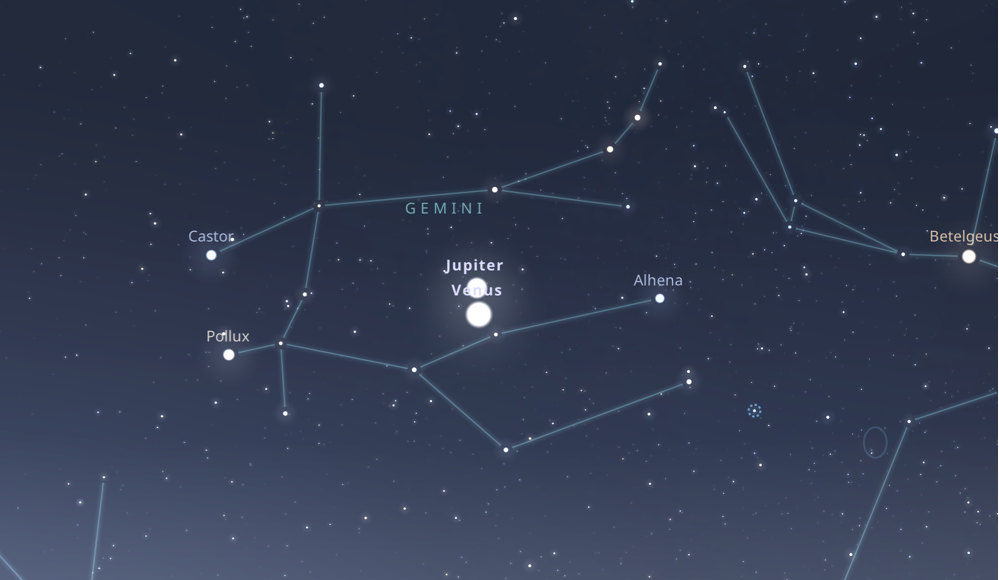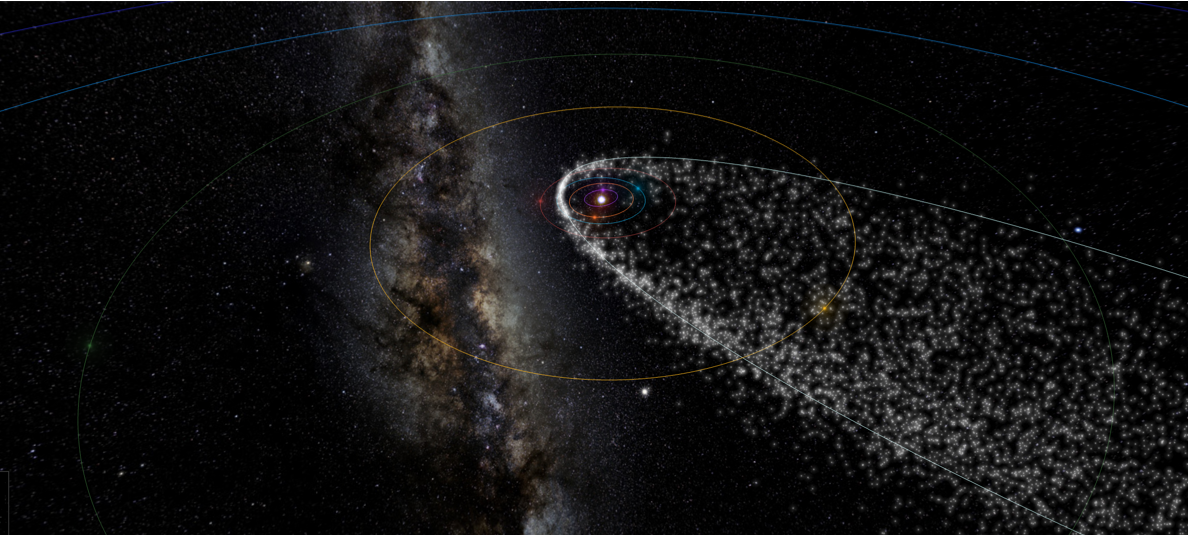August's Celestial Wonders: Your DWARFVision Sky-Guide for Aug. 2025
Get Ready for the Best Planetary Show and a new Supernova!
Hey Astro-nuts and fellow Dwarfer's,
Get ready for an epic countdown to Fall! August promises a stunning climax of celestial events, headlined by a breathtakingly close conjunction of the two brightest planets and a grand parade of six planetary neighbours. Your DWARF 2/3 scopes are going to be busy! This is your official August highlight guide from DwarfVision!
August Events at a Glance:
August 6: Saturn-Neptune Conjunction (Second Dance)
August 9: Full Sturgeon Moon & Asteroid 2 Pallas at Opposition
August 12: Venus-Jupiter Conjunction
August 12-13: Perseid Meteor Shower Peak
August 31: Venus-Beehive Cluster (M44) Conjunction
Throughout August: Parade of Six Planets, Comet 3I/ATLAS Brightening, & the Supernova SN2025rbs
The Main Event: Conjunction of Venus and Jupiter (August 12)
This is the one you absolutely cannot miss! On the morning of August 12, the sky's two brightest planets, Venus and Jupiter, will meet in an extraordinarily close conjunction. They'll be separated by less than a degree—less than two full-moon diameters apart! This spectacular "double star" will be an unforgettable naked-eye event in the eastern sky before sunrise. It's a prime target for photographers and a beautiful sight for everyone. This event will be easily visible from both Europe and North America in the pre-dawn eastern sky.
DwarfVision Challenge: Use the DWARF 3's wide-angle lens to capture this stunning conjunction with a terrestrial element in the foreground. Frame the planets over a scenic landscape, the silhouette of a tree, or an interesting building. A short time-lapse video will be a fantastic way to show the planets rising together.
A Parade of Six Planets (Mid-August)

The Venus-Jupiter conjunction is just one part of a larger celestial gathering! Throughout mid-August, a remarkable planetary alignment will be visible in the pre-dawn sky, featuring six planets stretched across the ecliptic: Mercury, Venus, Jupiter, Saturn, Uranus, and Neptune. Four of these—Mercury, Venus, Jupiter, and Saturn—will be visible to the naked eye. Use your DWARF 2/3 to spot the other two, with Saturn serving as a guide to Neptune's location once again. This impressive parade will be observable from both continents, though you will need a clear view of the eastern horizon.
DwarfVision Challenge: The wide-angle lens is perfect for capturing the entire planetary parade at once. The challenge here is to create a single, dramatic shot of all six planets and the crescent moon stretched across the sky. Experiment with a single long-exposure shot to highlight the fainter planets and capture the full grandeur of the alignment. Also, be sure to try a stacked capture, but note that once the sky becomes too light, the stacking feature will not activate.
Meteor Watch: The Perseids - A Challenge (August 12-13)
Traditionally, one of the year's best, the Perseid meteor shower, faces a significant challenge in 2025. The shower's peak on August 12-13 occurs just a few days after the full moon, meaning a bright, waning gibbous moon will wash out all but the brightest meteors. Don't despair, Astro-nuts! The Perseids are also known for producing spectacular "fireballs" that can punch through the moonlight. The Perseids are a Northern Hemisphere shower, best viewed from both Europe and North America. Your best strategy is to find a dark location and position yourself so that a building or tree blocks the moon from your line of sight.
DwarfVision Challenge: The Perseids are a fantastic, wide-angle target. Point your DWARF 3's wide-angle lens at a section of the sky away from the moon and begin a long session of sequential photos. The goal is to capture as many meteors as possible. You can later combine the images to create a composite showing multiple streaks across the night sky.
An Interstellar Opportunity: Comet 3I/ATLAS

One of the most exciting targets for August is an ambassador from another star system! The interstellar comet 3I/ATLAS is continuing its journey and is expected to brighten steadily throughout the month. This is a critical time for observation, as its magnitude will increase from about 16 at the beginning of the month to a much more accessible magnitude 12 by month's end. This makes it a perfect target for your DWARF 2/3, especially from a dark site. Look for it as it moves through the constellations Ophiuchus, Scorpius, and Libra, which are favorable for observation from both Europe and North America.
DwarfVision Challenge: The comet is still faint, so the challenge is to capture it with your DWARF 3's telephoto lens. Use a long exposure time and stack as many images as possible to bring out the faint coma and any potential tail. A follow-up challenge is to compare your August images with your September captures to show the comet's rapid brightening and movement.
Planetary and Solar System Objects Highlights
Saturn and Neptune's Second Dance (August 6): The second act of the rare triple conjunction occurs on this date. The two gas giants, Saturn and Neptune, now in retrograde motion, will pass each other again. It's another great opportunity for Dwarfer's with DWARF 2/3 to hunt for Neptune. This event is a global phenomenon, visible from both Europe and North America in the morning sky.
DwarfVision Challenge: Use the wide-angle lens to capture both Saturn and Neptune in the same frame for a unique perspective on their relative positions. This is a perfect opportunity to show the "cosmic dance" in a single shot.
The Sturgeon Moon (August 9): The full moon of August is known as the Sturgeon Moon, named for the large fish that were abundant in North American lakes at this time of year. As a full moon, this will be visible from anywhere on Earth when the Moon is above the horizon.
Asteroid Hunting with Pallas (August 9): The asteroid 2 Pallas reaches opposition on this day, making it visible all night and at its brightest. It's the perfect time to hunt for this minor planet with a telescope or DWARF scope. Pallas will be in the constellation Delphinus, which is well-placed for observers in both Europe and North America.
DwarfVision Challenge: Capture two telephoto images of Pallas several hours apart. The challenge is to then "blink" the two images to reveal Pallas's motion against the static background stars.
Venus Visits the Beehive (August 31): To close out the summer, brilliant Venus will take its turn to glide past the famous Beehive Cluster (M44) in Cancer. This will be a stunning pre-dawn sight for DWARF 2/3 observers and astrophotographers, offering a magnificent view of the dazzling planet against the glittering star cluster. This event is visible from both Europe and North America.

Venus visits M44 the Beehive the morning of August 31st DwarfVision Challenge: The DWARF 3's wide-angle lens is perfectly suited for this event. Capture the entire Beehive Cluster with brilliant Venus as a "guest star" in the same field of view. Experiment with a mosaic to capture the entire constellation of Cancer and show Venus's dramatic position.
Deep Sky - Supernova SN2025rbs

Good news, Astro-nuts—there's a new "guest star" in the sky right now! A supernova, officially designated SN2025rbs, has been discovered in the stunning spiral galaxy NGC 7331. NGC 7331 is often called a "twin" of our Milky Way and is a popular astrophotography target in the constellation Pegasus. SN2025rbs is a Type Ia supernova and is currently estimated to be around magnitude 12-13. While not a naked-eye object, this is well within the reach of a DWARF 2/3 and makes for an excellent observation target! It is, however, very close to the galaxy's bright core, which can make it a challenge to distinguish from background stars. This event is best viewed from the Northern Hemisphere, so observers in both Europe and North America should be able to track it as it progresses.
DwarfVision Challenge: The main challenge is to resolve this faint supernova against the bright galactic core. Use your DWARF 3's telephoto lens and stack many long-exposure images to make the faint point of light visible. You can later compare your image to an older photo of NGC 7331 (taken before the supernova) to confirm the new star's presence, a classic citizen science method for supernova confirmation.
A Second Nova is Possible

There's a lot of anticipation for a "new star" to appear soon. The recurrent nova T Coronae Borealis (T CrB) is predicted to erupt anytime between now and October. When it does, it could brighten to magnitude 2, making it a naked-eye object as bright as the North Star! It's a tricky one to predict, but many observers are keeping a close eye on it.
DwarfVision Challenge: This is an excellent opportunity for a citizen science project. Use your DWARF 3's wide-angle lens to image the constellation Corona Borealis on clear nights and compare your captures over time. The challenge is to spot the sudden, dramatic brightening of a star that could signal the nova's eruption. Your observations can be valuable data for the astronomical community, helping to confirm the event.
So get your DWARF 2/3 charged up, set your alarms for those early morning spectacles, and let's make the most of this incredible month!
Clear Skies and Happy Hunting!
Duncan from DwarfVision
Exclusive for the CREW: The DATACLUB
Introducing the DATACLUB, your exclusive pass to a universe of deep-sky assets. Dive into our library of ready-to-use D3 data, high-resolution .pngs processed in Siril, and professional Lightroom Presets. Whether you want to experiment with new stacking techniques or enhance your post-processing skills, our data gives you a head start. Join our community and elevate your astrophotography to the next level. Learn More!









Wow my friend, really appreciate the hard work you put into it...very useful document